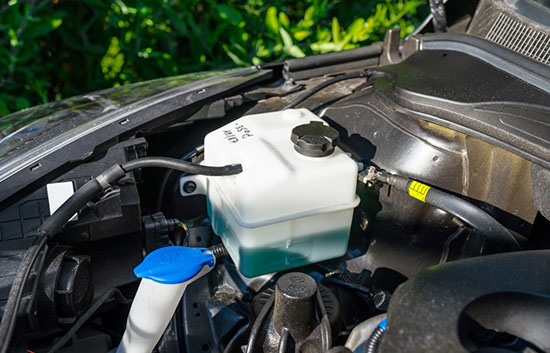Your car engine must have heat to run properly and prevent premature wear. But too much heat can damage the engine. Responsibility to keep the engine heat at optimal levels is with your car’s cooling system and its components. The cooling system transfers engine heat to the coolant. The coolant moves to the radiator where it releases the excess heat to the outside environment and the coolant returning to the engine starts the process again. The process involves many cooling system parts that flawlessly work together to keep your car’s engine temperature at an optimum level. The main components of a car’s cooling system are Radiator, Coolant, Water pump, Thermostat, Hoses and Radiator fan.
Radiator
The radiator is the central part of your car cooling system. It monitors and regulates the engine’s temperature and prevents it from overheating. Also called a heat exchanger, the radiator is set at the vehicle front and transfers heat from the coolant that flows through it to the outside environment. It is connected in a parallel fashion to flat tubes. This square or rectangular-shaped assembly sits behind the front grill of the vehicle.
As a car owner, you need to get the radiator’s exterior checked periodically by a car mechanic to remove an accumulation of bugs or other road debris that affect the cooling ability. Regular inspection will also help you to ensure that there are no holes or leaks in the radiator that is usually caused by impacts with stones.
Coolant
Coolant is the fluid – a 50/50 mix of ethylene glycol and water. It regulates the engine’s temperature and prevents it from overheating. It flows into one side, on the top or bottom of the radiator. Then, it flows throughout the radiator tube and then small passageways in the engine. This process transfers excess heat from the engine block to the coolant.
It is advisable to replace coolant based on your vehicle’s manufacturer recommendations to protect the radiator and entire cooling system from corrosion and the engine from freezing temperatures. At the time of servicing your car at a car repair store in Canada, it is advisable to check the coolant level. If the level is below the need, refill more coolant.
Water Pump
Water pump is one of the significant car parts, located under the timing belt cover and is driven by either the engine’s timing belt or by a serpentine belt connected to the pulley of the pump. The pulley and belt turn the pump’s vanes or blades for creating suction that keeps the coolant circulating continuously. However, the water pump may fail to function over time. So, it is important to check it periodically for a coolant leak. Search for a reputable car mechanic in Toronto if your vehicle’s water pump needs to be replaced.
Thermostat
The thermostat is a valve. It is fitted between the radiator and engine. Usually, it is connected to a lower or upper radiator hose that opens and closes to allow or prevent coolant from flowing to the radiator. When you first start your engine, your car engine remains cold.
When the thermostat is closed, it stops the coolant from moving to the radiator and helps the engine heat up soon and reach required operating temperature. On the other hand, when the thermostat is open, it lets the coolant move to the radiator and prevents engine from overheating. This process reduces engine wear.
Fan Shroud
A fan shroud is another important component of the engine cooling system when it comes to car parts. Fan shroud accommodates fan which in turn distributes air across the radiator to have effective engine cooling. In most vehicles, the fan is controlled by its own electric motor these days. The electric motor turns on and off when the vehicle’s computer instructs it.
Previously, the fan would be controlled by a fan clutch. The fan’s pulley would spin freely until a thermostat signals a specific rising temperature. At that point, the fan clutch engages, turns on the fan to cool the engine.
Hoses
As discussed above, coolant travels from engine to radiator and back again through rubber hoses. This damages the rubber. Also, rubber weakens due to its regular exposure to heat and environmental factors. It is therefore important to get hoses checked and replaced from time to time.
Conclusion
The vehicle cooling system plays a very important role in safeguarding your car engine. Even if you maintain it properly, things can go wrong and the engine will overheat. So, get it checked at the time of getting your car serviced. Now that you have understood how the cooling system works. It is time to take a look at some common causes of overheating and how you can get them fixed.
Limitless Tire is a one-stop-shop for car repair and buying all types of tires and rims in Canada. Whether you are having problems in your car in Mississauga, Toronto ON, Brampton, Malton or want services related to Custom Wheels, Brake Repair, Wheel Alignment, Tire Installation, Batteries or other car parts, visit Limitless Tire.



